This rendition of Lebanese grape leaves is called "warak enab bi zeit." Each grape leaf is filled and rolled with rice, herbs, and chopped vegetables before being layered into a pot with sliced vegetables. The mixture is then slowly simmered in a lemony broth.
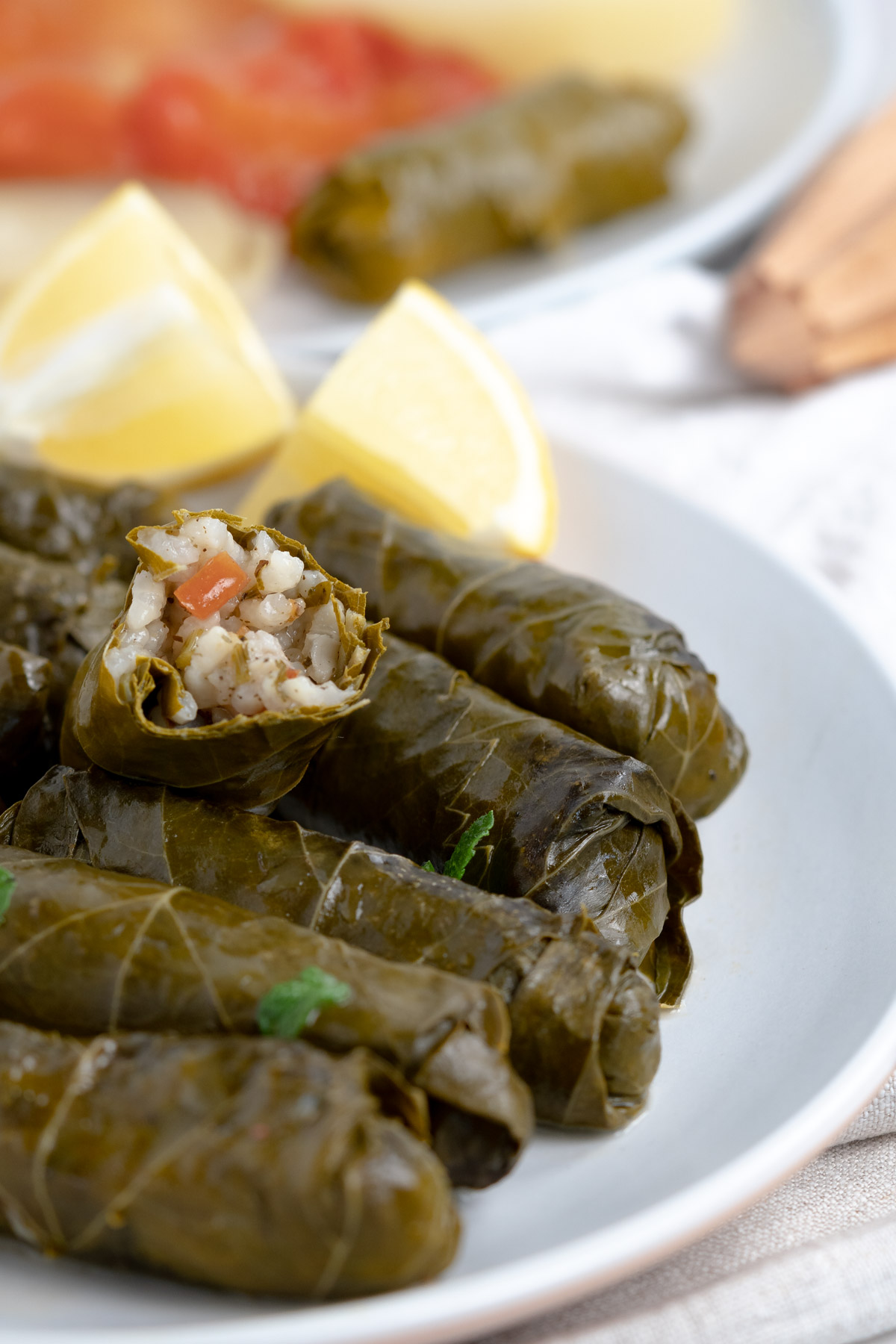
What is Warak Enab?
The term “warak enab”, pronounced wah·rah eh·nab, can generally be used in the context of explaining you’ll be eating or that you'll be making stuffed grape leaves.
The term translates from Arabic to English as “grape leaves”.
There are two versions of warak enab - meat and rice ("bi-lahm" - "in meat") or vegetable and rice ("bi-zeit" - "in oil" known as the vegetarian version).
I'm deeply grateful to my Mom for sharing her recipe with me. I truly appreciate the time and effort she puts into making this delicious meal every time. Now it brings me great joy to make it for my own family.
Ingredients You’ll Need
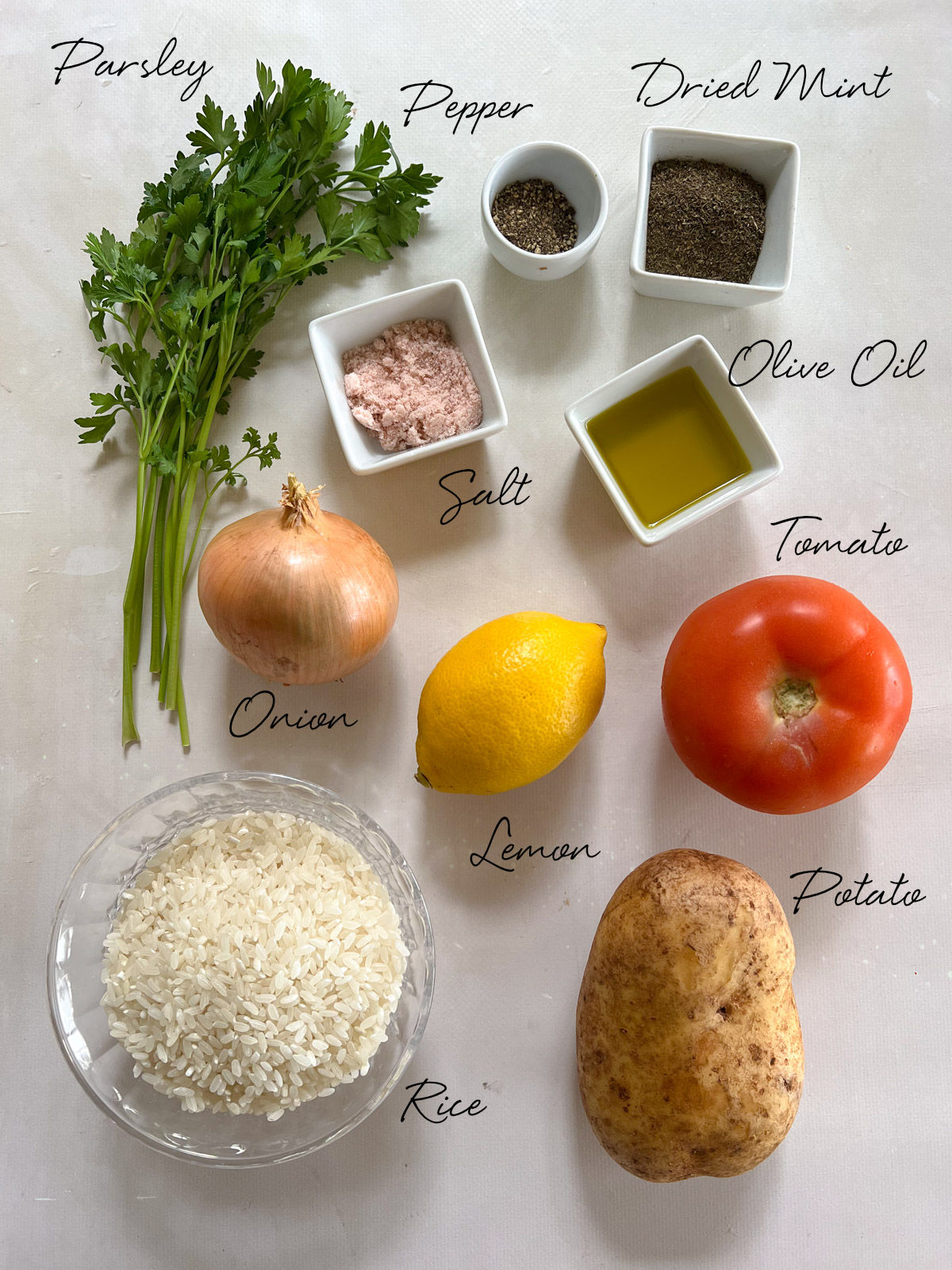
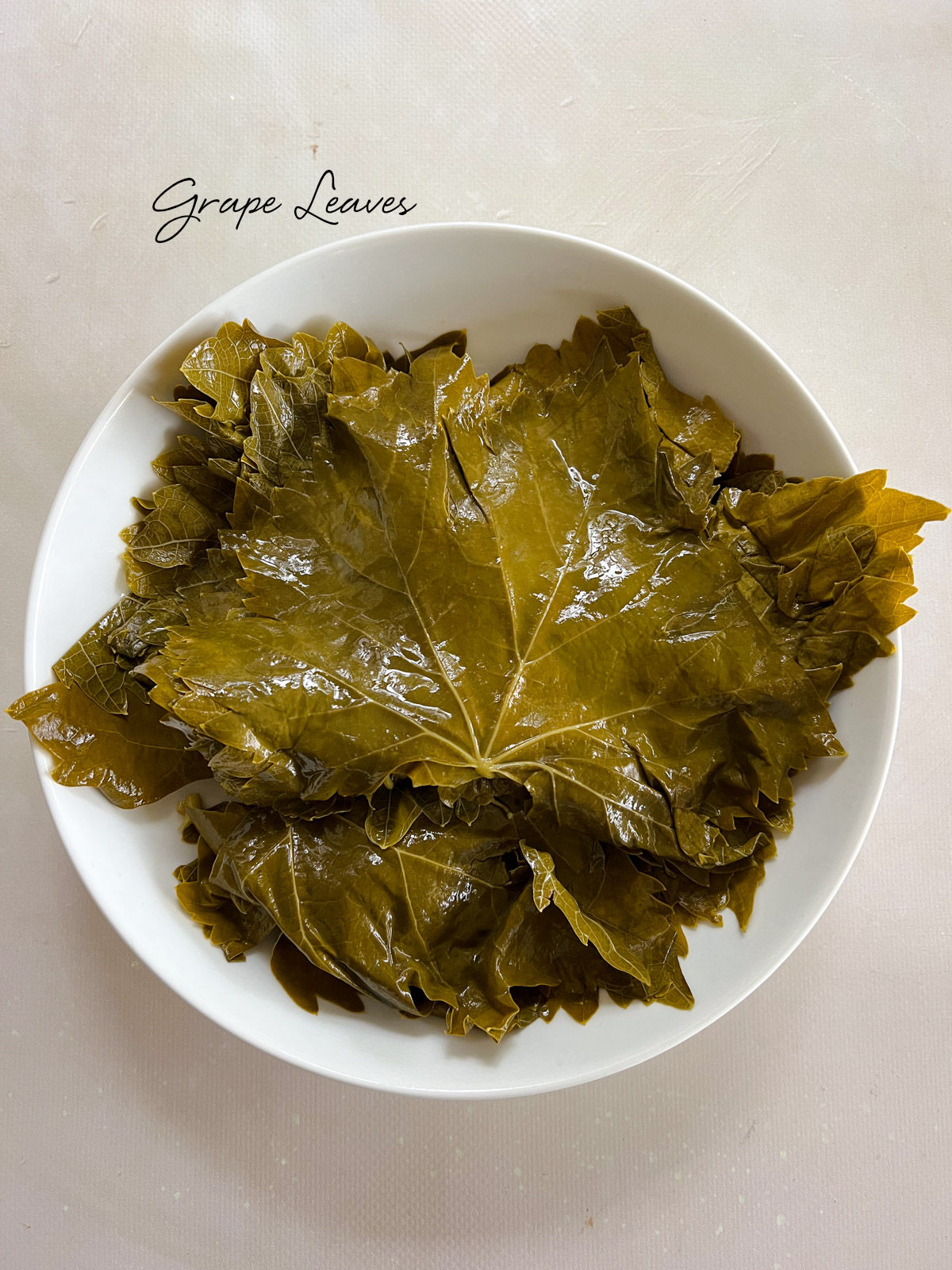
The complete list of ingredients with measurements, can be found in the full recipe card below.
Grape Leaves
Grape leaves are what each roll is made out of. For this specific recipe I have used jarred grape leaves which I found at my local Middle Eastern grocer.
Alternatively if you have a grape vine growing, pick the leaves fresh and after a quick wash, blanch the leaves to make them malleable for rolling.
Rice
Medium-grain white rice is recommended. Rinse the rice before use to remove excess starch to stop it from clumping during cooking. Short-grain white rice can also be used as an alternative.
Veggies for Layering
I like to use a combination of sliced potatoes, onion and tomato between each layer of warak enab.
Stuff and Roll Warak Enab
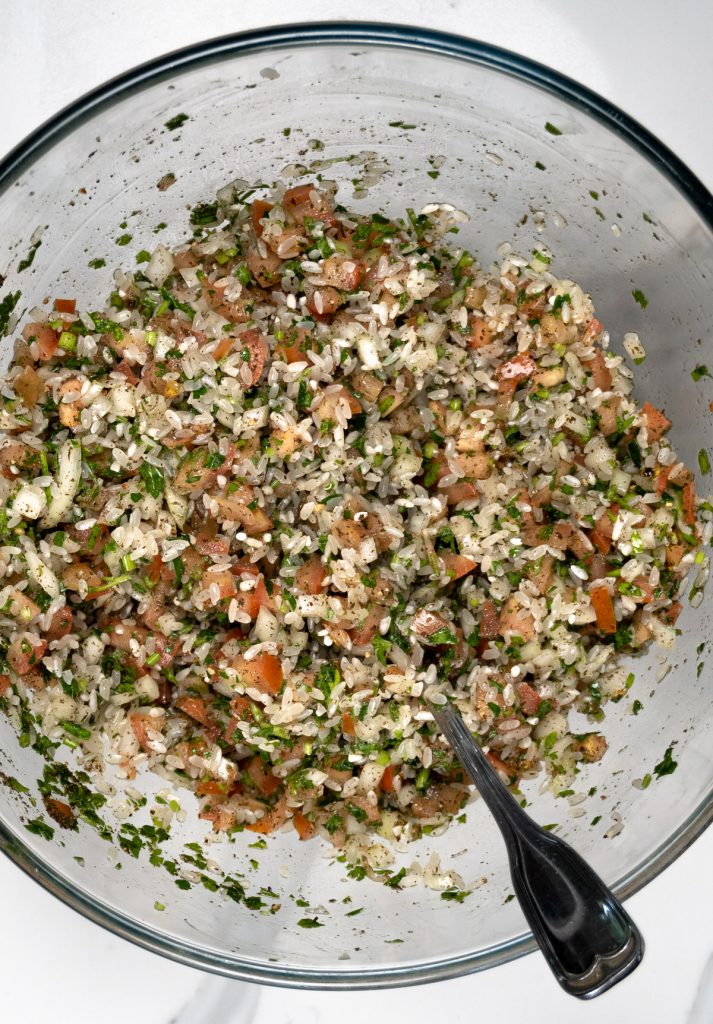
Create the rice and veggie filling, ensure the veggies are diced very finely to make it easier to roll the leaves.
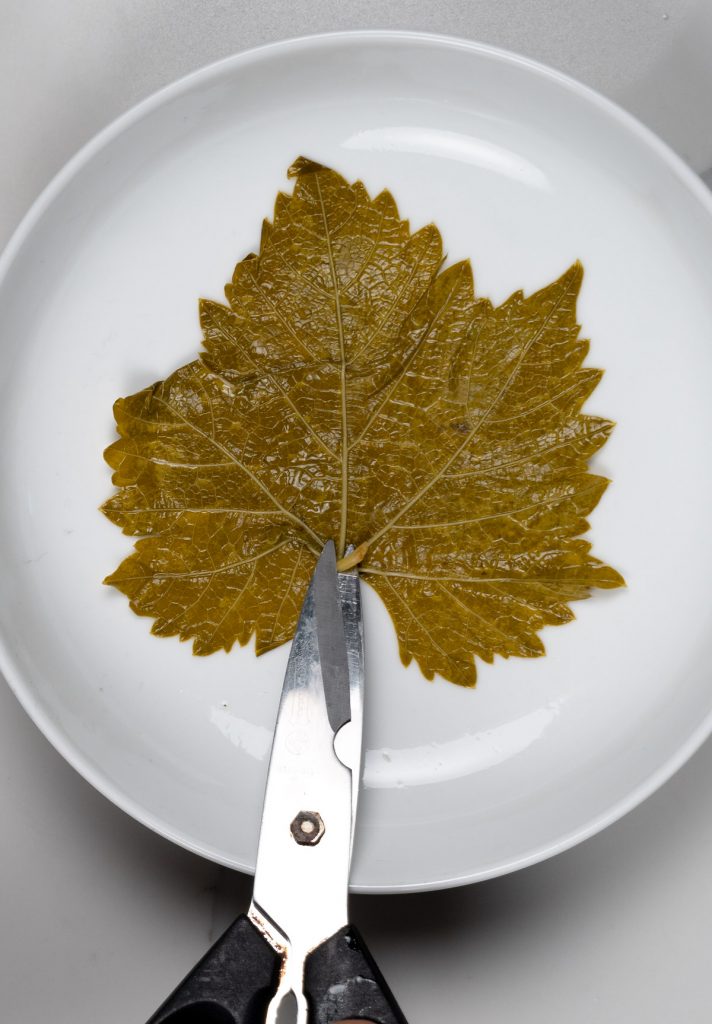
Trim and discard the stem. Face the grape leaf vein side up.
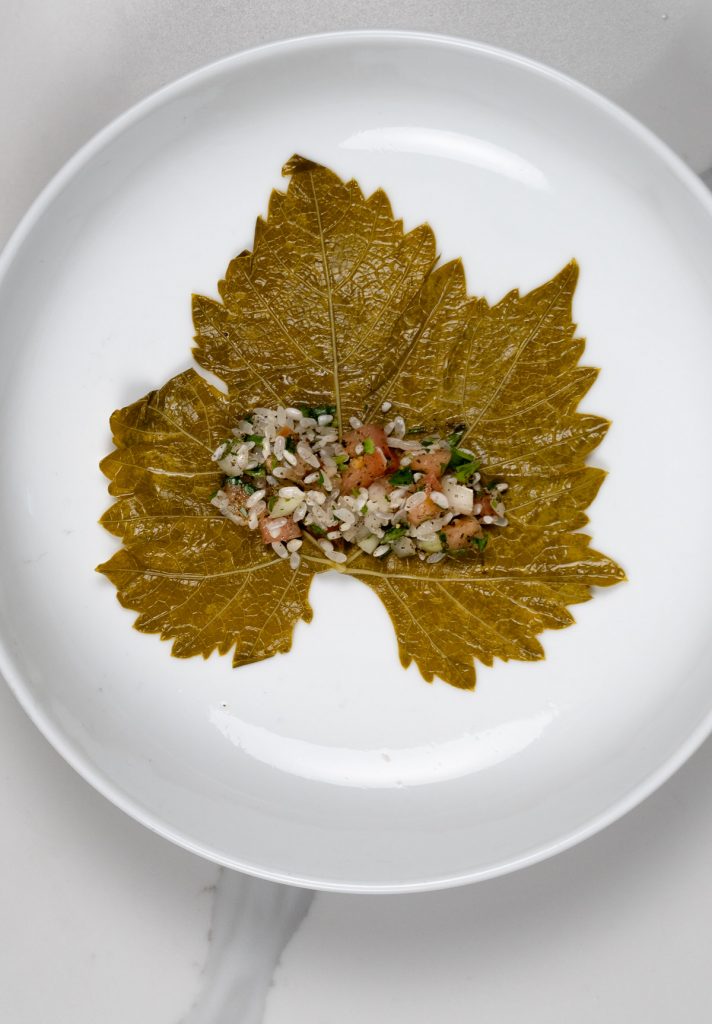
The amount of filling should correlate to the size of the grape leaf.
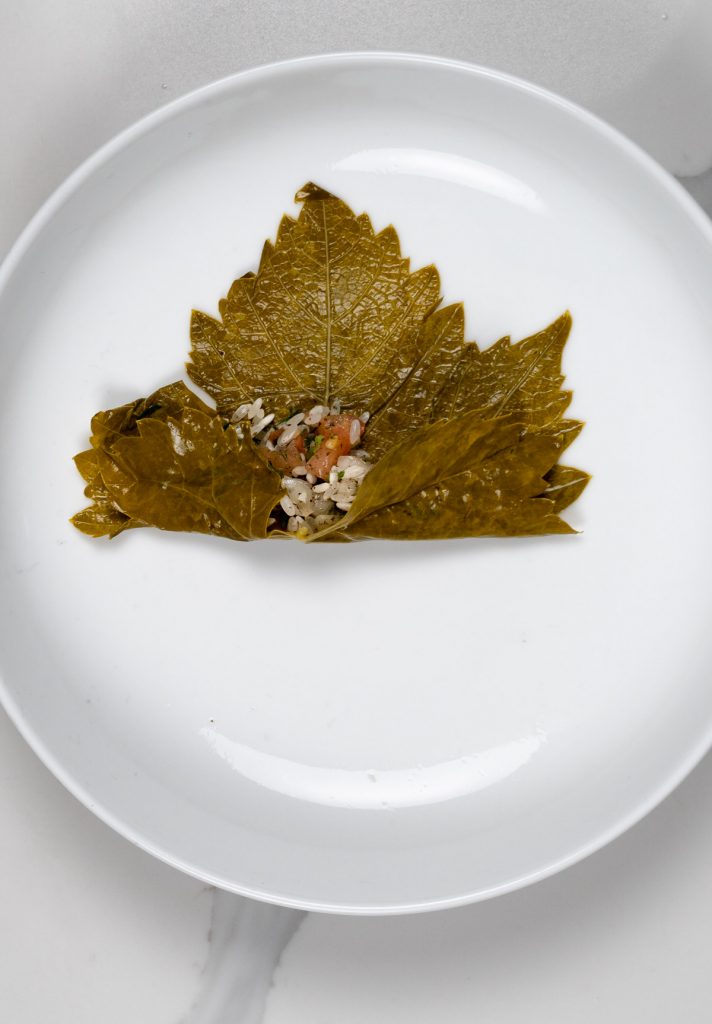
Roll the bottom part of the leaf over the rice.

Fold in the sides over and around the rice filling.
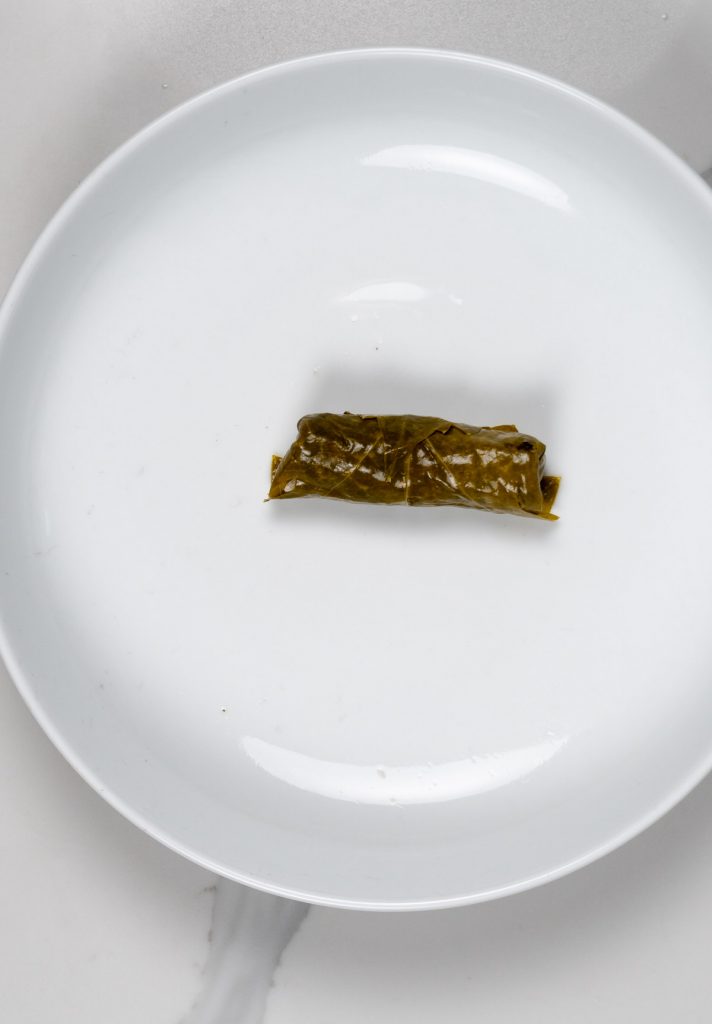
Continue rolling upwards until a cylindrical roll has formed.
Layering
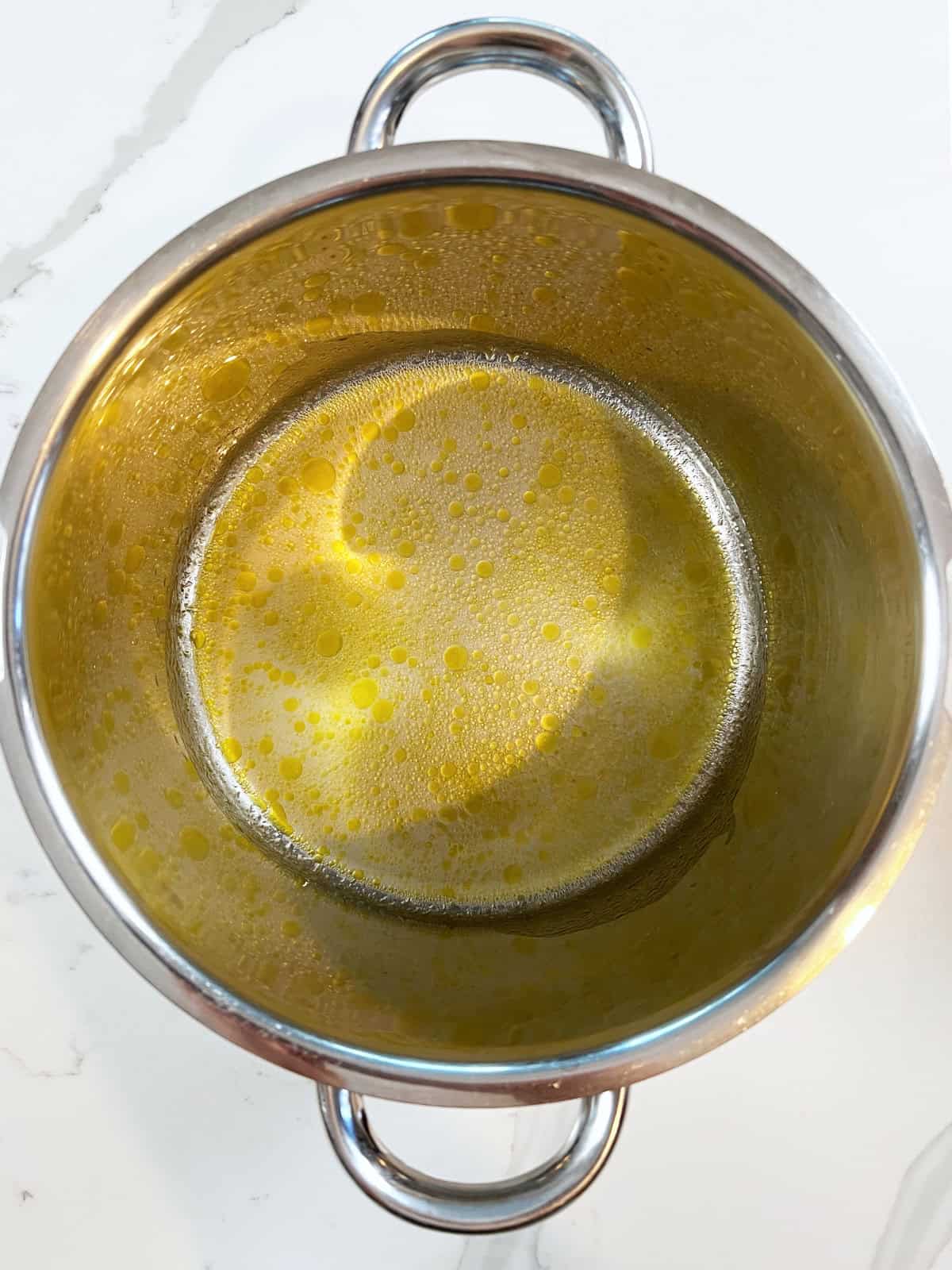
Coat the bottom of a large pot with the lemon and olive oil mixture.

Place a layer of sliced potatoes on the bottom of the pot.
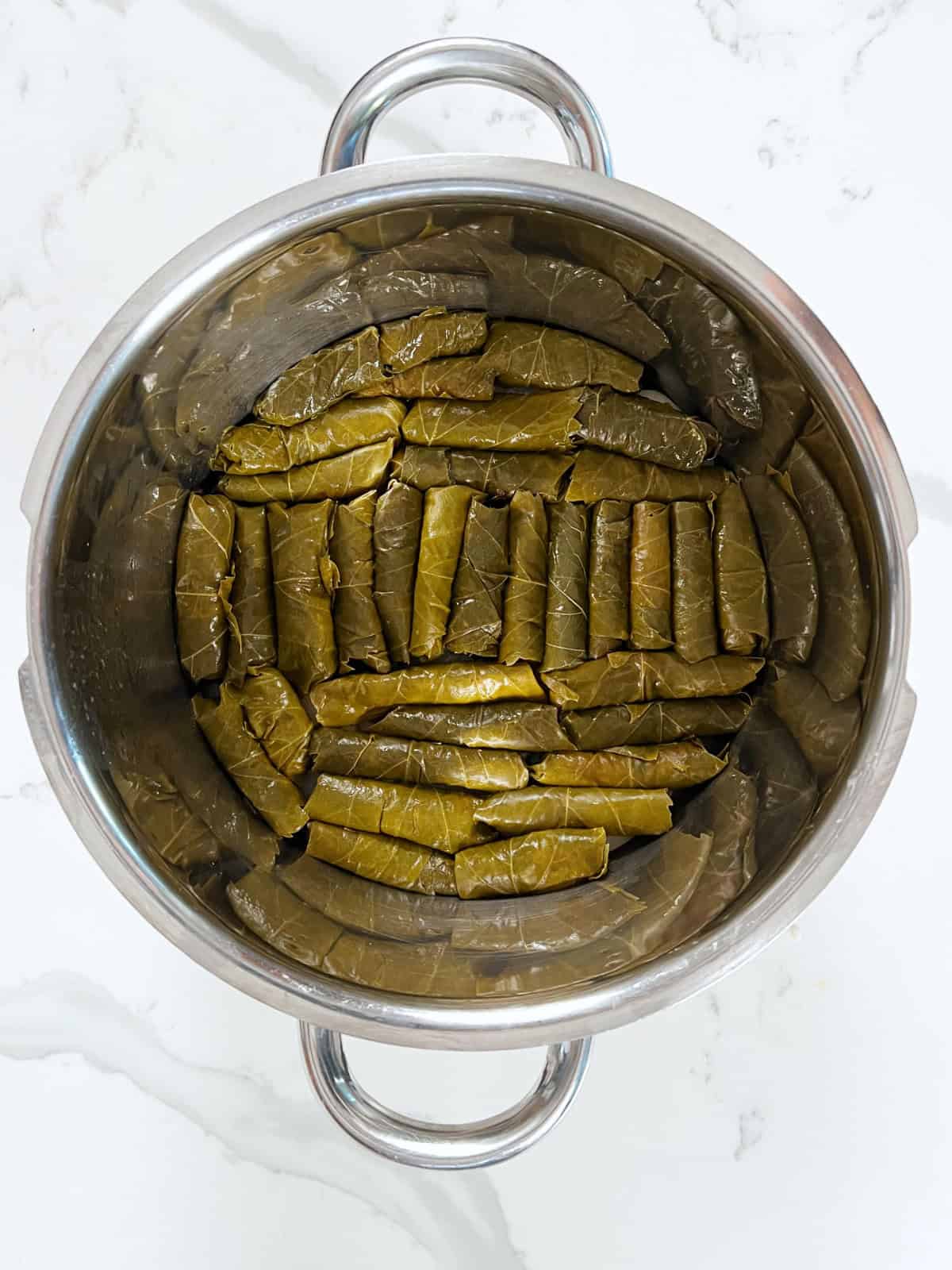
On top of the potatoes layer the rolled warak enab.

Then layer the onions and tomato slices and repeat until all warak enab is layered, as per below recipe card with the full cooking instructions.
Pro Tips
Prepare all the vegetables before getting started, this will help speed up the process of making this meal.
Do not overpack the leaves with filling as they will expand and can burst.
Do not roll the leaves too tightly, make the rolls taut with enough room for the filling to expand.
At the start, do not bring this to a rolling boil, as soon as the water boils, turn the heat down to low immediately. This will ensure the food doesn’t move around too much.
Serve with extra lemon wedges for squeezing on top for added sourness. I love doing this!
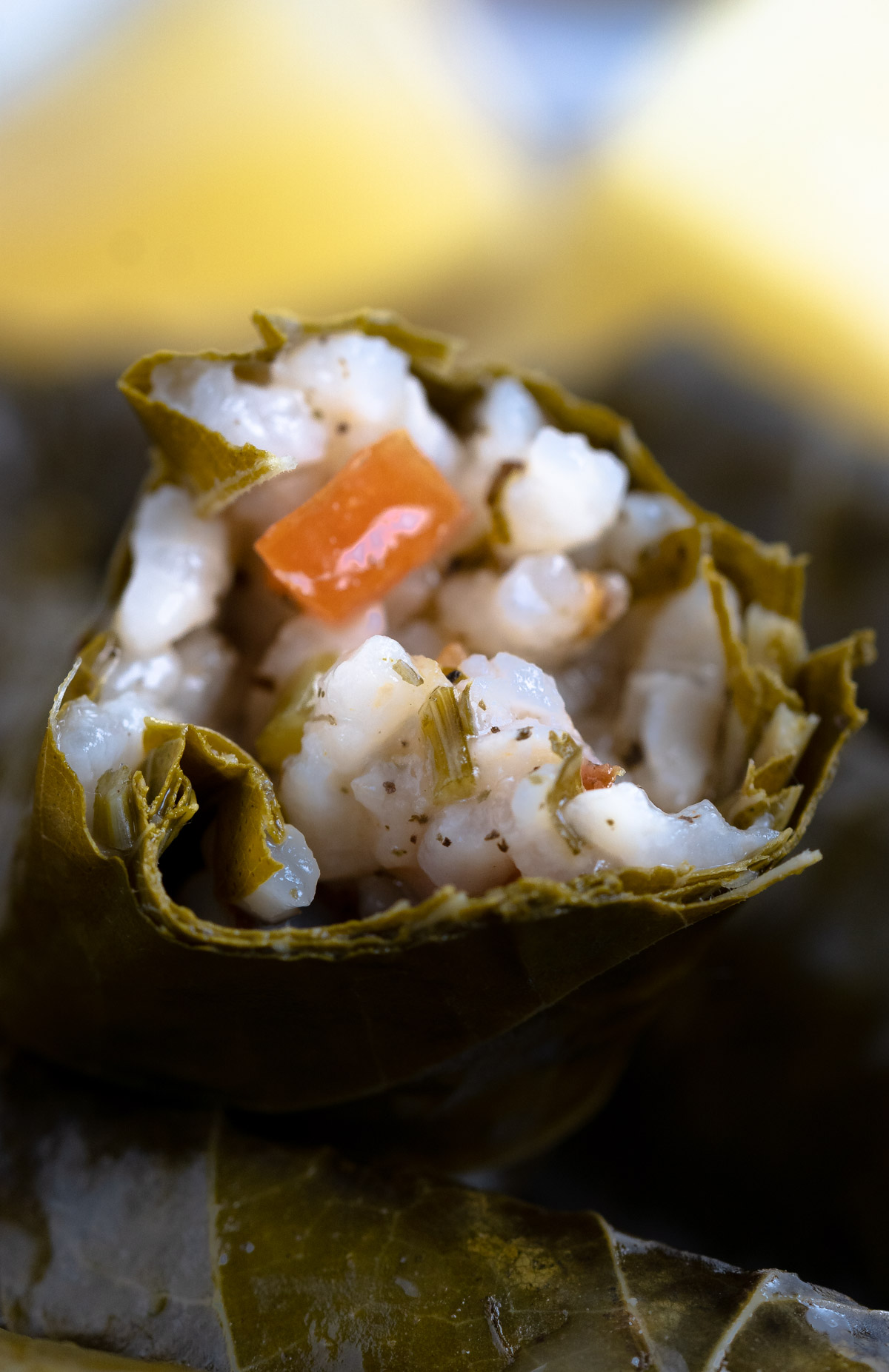
Storage
Can I store uncooked warak enab in the freezer?
Yes, absolutely. Alternate layering the uncooked grape leaf rolls in an air-tight freezer friendly bag, seal and store in the freezer until needed. The can be frozen for 3 months.
Can I freeze cooked warak enab?
Yes. Cool down the cooked warak enab to room temperature. Transfer portions into an air-tight container and freeze for up to 3 months. Thaw out and then reheat.
What about leftovers?
Leftover warak enab taste even better as the flavors have had time to meld. Place the left overs in an airtight container in the fridge for up to 5 days.
Serving Suggestions
Warak enab is great on its own with fresh mint leaves on the side, however, you can serve a simple side salad.
Some people even place stuffed small zucchini (using the same stuffing) inside the same pot when cooking this meal. Similar to stuffed Lebanese zucchinis.
Warak enab bi zeit can also be served as part of a mezze, which is a spread of small share plates.
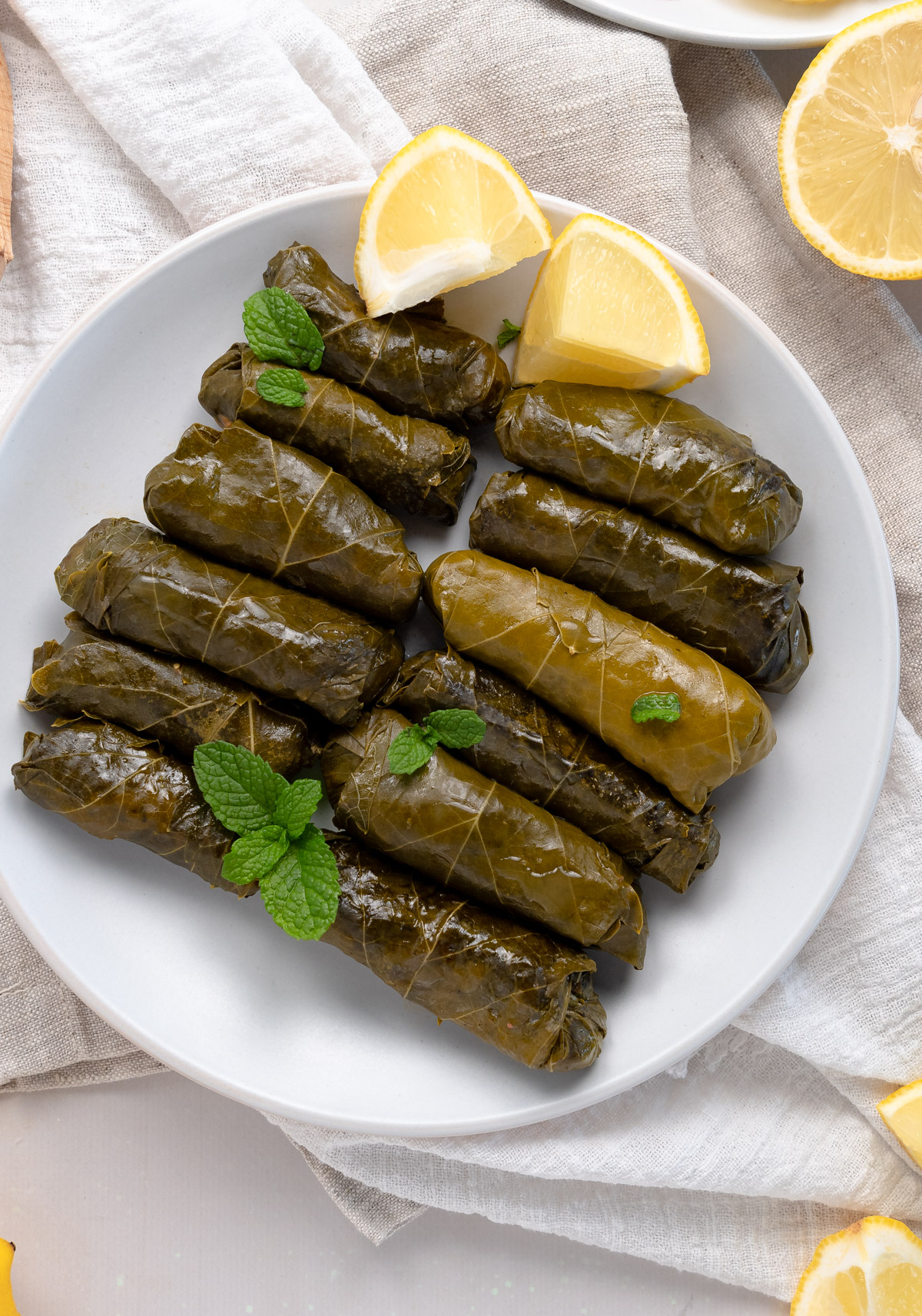
Did you make this? I'd love to know! Leave me a comment below with a ★★★★★ star rating or tag @plantbasedfolk on social media.
Recipe
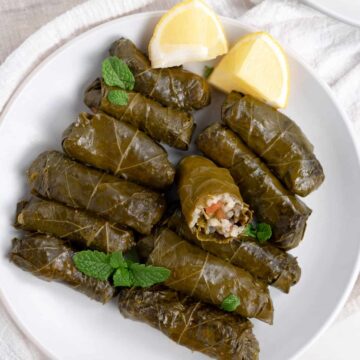
Warak Enab (Lebanese Grape Leaves)
Ingredients
- 1 Jar Grape leaves rinsed (70-90 pieces)
- 1-3 large Potatoes 1cm slices (⅓")
- 1-3 large Tomatoes 1cm slices (⅓")
- 1-3 large Onions 1cm slices
Filling
- 1½ cups Medium grain rice rinsed and drained
- 1 cup Parsley leaves finely chopped
- 1 small-medium Onion Finely diced
- 2-3 medium Tomatoes Finely diced
- 1 tablespoon Ground mint substitute with fresh mint leaves (finely chopped)
- 1 tablespoon Olive oil
- 2 teaspoon Salt
- 1 teaspoon Black pepper
- 1 small Lemon freshly squeezed
Broth
- 4 cups Water or as needed (see notes)
- 1 teaspoon Salt or to taste
- 1 small Lemon freshly squeezed
- 1 tablespoon Olive oil
Instructions
Filling
- In a large mixing bowl, combine all the filling ingredients and set this aside.1½ cups Medium grain rice, 1 cup Parsley leaves, 1 small-medium Onion, 2-3 medium Tomatoes, 1 tablespoon Ground mint, 1 tablespoon Olive oil, 2 teaspoon Salt, 1 teaspoon Black pepper, 1 small Lemon
Prepare the Grape Leaves
- Take the brined grape leaves out of the jar, unravel each one gently and then rinse them with cold water. Layer each leaf flat on a tray or large plate.1 Jar Grape leaves
Create the Rolls
- On a flat surface, lay flat one grape leaf, vein side up. Trim off and discard the stem with kitchen scissors.Place one spoonful of filling in a straight line near the stem, in the middle of the leaf. N.B., filling size should be relevant to the size of each leaf.Fold over the bottom of the leaf over the filling and then the sides, and roll up to create a cylindrical parcel. Repeat until all stuffed grape leaves are completed. See the above article for step-by-step photos.
Layering and Cooking
- Make a mixture by combining 1 tablespoon olive oil, juice of 1 lemon, 1 teaspoon of salt in a cup. Coat the bottom of a large pot with approximately 1 teaspoon of the mixture. Place a layer of sliced potato, then a layer of stuffed grape leaves laid in rows. Sprinkle another teaspoon of the lemon mixture. Next, layer sliced onion and tomato, and then another layer of grape leaves in rows. Layer remaining potato, onion and tomato, filling in the gaps between rolls. Sprinkle the remaining lemon mixture. Securely place a heat-proof plate on top of the layers. Pour water around the edges of the plate (not on top of the plate) until the rolls and vegetables are submerged under ⅓" / 1cm of broth. Secure the pot with a lid.Bring to a boil over high heat, then immediately turn heat to low and simmer for 40 minutes (see notes). Turn off the heat and allow the pot to stand for 15 minutes. Serve warm or cold, topped with a little extra olive oil (optional).1-3 large Potatoes, 1-3 large Tomatoes, 1-3 large Onions, 4 cups Water, 1 teaspoon Salt, 1 small Lemon, 1 tablespoon Olive oil
Video
Notes
Nutrition
N.B., nutrition info is an estimate based on an online nutrition calculator. This will vary based on the specific ingredients you use.
If you enjoyed this recipe, consider supporting my work for the cost of a cup of coffee.

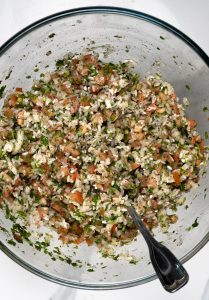
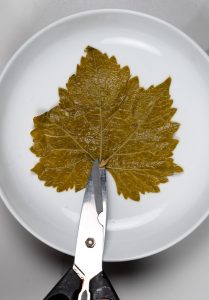
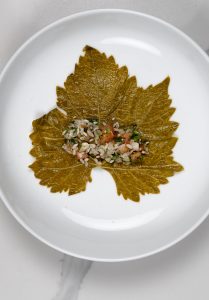
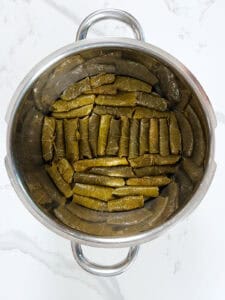








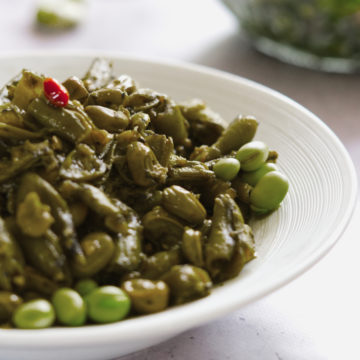
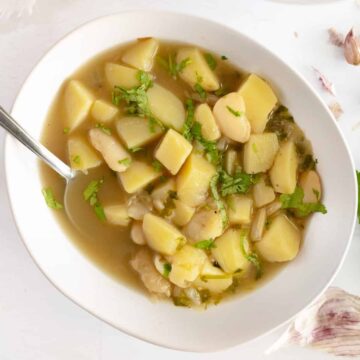

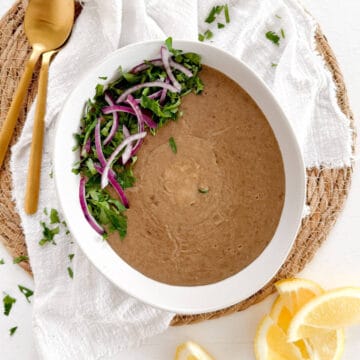
Amalie
I have never made this kind of dish, but it was delicious and easy, but time consuming as I am new to rolling leaves. I am so excited to make it again as I think I will be faster at it
Maggie
I've always wanted to try grape leaves. Such an easy and they came out delicious!
Rebecca
Really delicious, I've never used grape leaves before.
Julie
I come from a Lebanese background, currently living in Canada and miss all of the foods that I had when I was younger. I am grateful for your recipe, it tastes exactly how I remember it growing up. Divine!